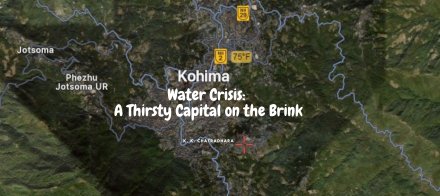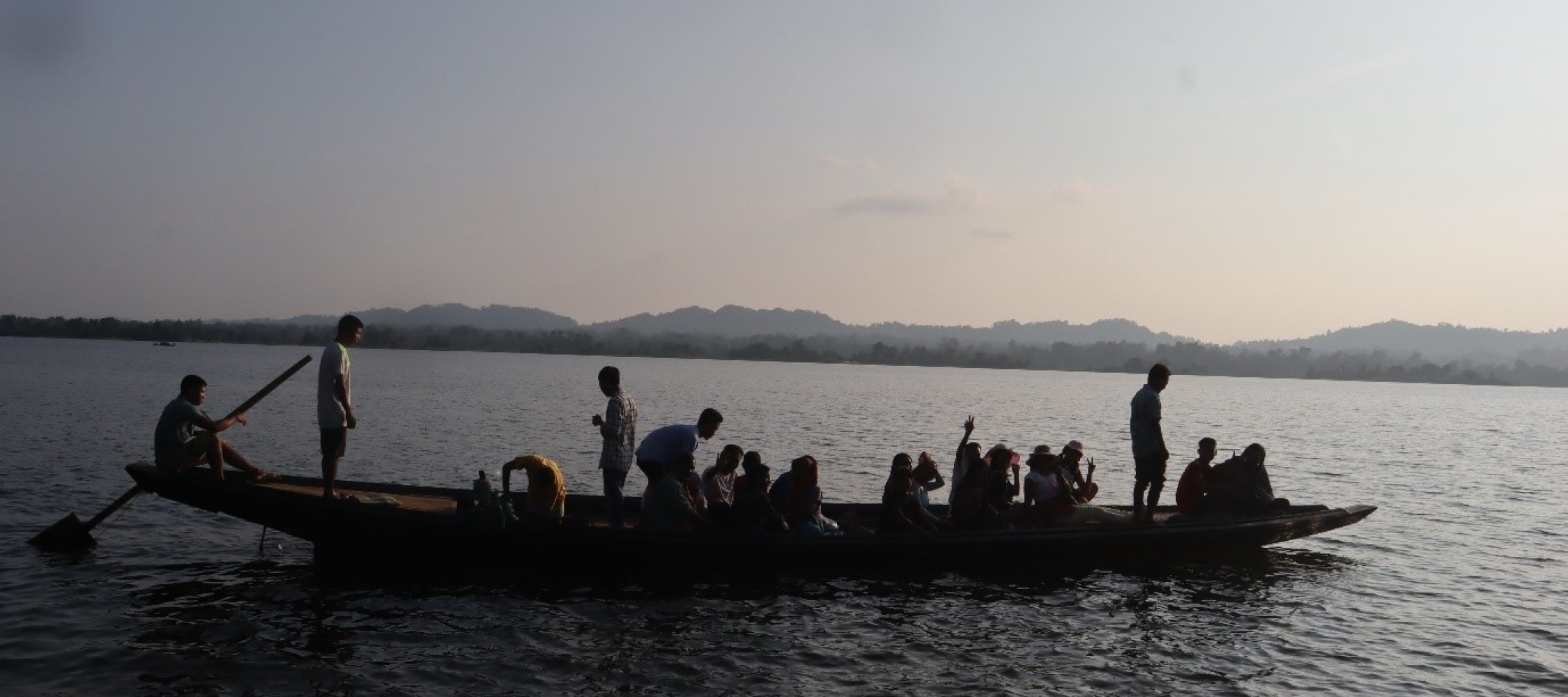 |
Introduction
You are born from the dew of heaven. How beautifully you flow towards oceans. Khumtwi (Gomati) you are not just a river but a life-giver. The tale of Raima and Saima (Dongour ni Khumpui) originated from you. Many generations have lived on your banks. From deities to plants all are in your debt. You have vanished the sins of people. Took away their sorrows and pain. But still, humans have caused your suffering. Your constant flow is captured in a tiny space. That turned into an innocent and fertile land to curse one. Many lost their lands and were forced to relocate. The holiness became a myth to new generations. Yet, you have discovered how to flourish into a new shape effortlessly and magnificently. But today the narrative of your holiness, fertility and new avatar has been altered and you are now only seen as a commodity.
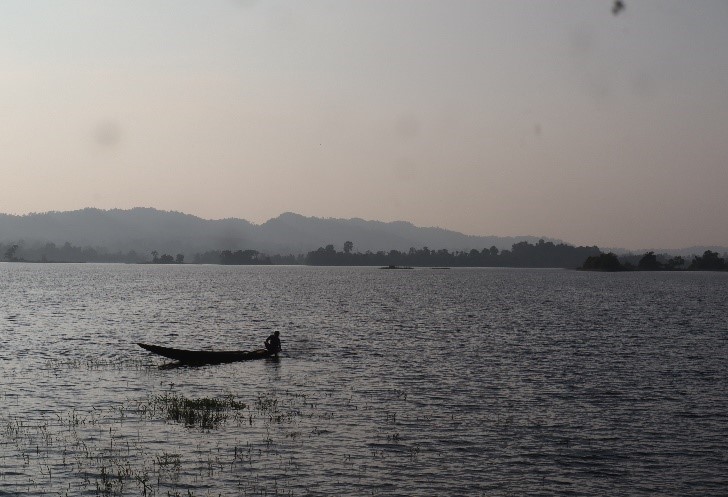
Figure 1: A man in the tiny boat amid Dumboor Lake (Image: Thomas Malsom)
The above statement represents the memories and magnification of the peripheral marginality with the river Khumtwi (Gomati) encountered by the tribal people of Raima Valley, who are residing near the bank of Gomati River, locally known as Gumti Twisa, which is referred to as the ‘river of life’. Earlier the name of the Gomati River was Khumtwi Twisa. However, other than the indigenous tribal people, the river is viewed merely as a resource to be put monetary values for a commodity, therefore a big dam was constructed into this river upstream for hydel power in the year of 1974, without weighing what this dam could and had caused. While the people involved in the dam project were given the landlord compensation, the forged signature and its consequences were left unweighted. The dam water has submerged a large area of cultivable land causing a massive destruction of forest and its natural resources, along with the habitats of many wildlife animals like deer, jackal and many rare and endangered species. The dam did not just submerge the fertile land but had uprooted thousands of tribal families forcing them to leave their ancestral land where they had lived for many generations and till today the displaced groups are struggling to get their permanent settlement. Due to the lack of compensation for their alternate means of subsistence and the uncertain means of subsistence, many wealthy displaced people were compelled to become destitute, landless and marginal farmers. More than 12 thousand evicted families who lost their ties to the land had to settle in different regions. It was not just a loss of lands and other properties, but the feelings and emotions of people were wounded, memories were lost and most importantly history was submerged.
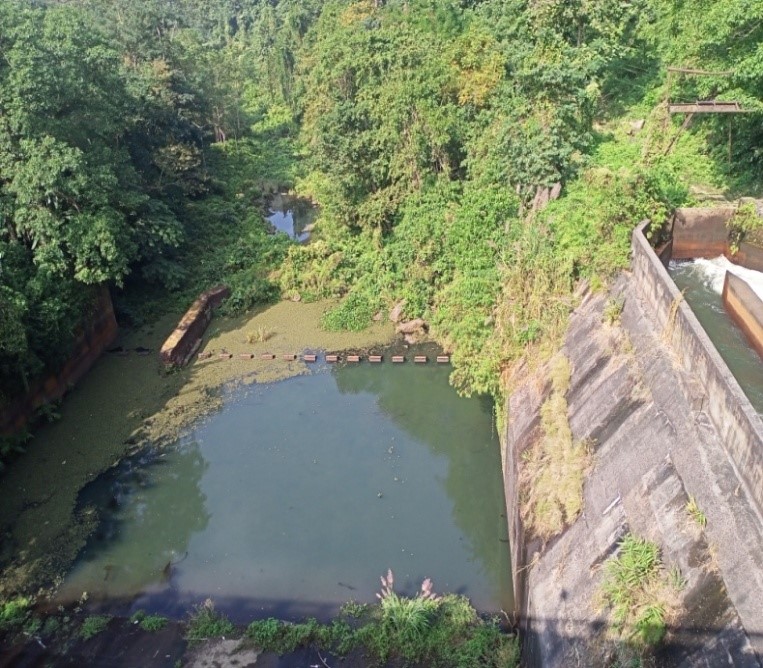
Figure 2: A glimpse of Dumboor Dam (Image: Joten Reang)
After several decades, when the submerged land emerged into a beautiful lake, which is called Dumboor Lake, at a distance of about 3 km from the dam, the state converted it into a tourist destination. The existence of this new shape of lake or its popularity as an Island is still new and known to only a few people, so even today, when one says Tripura has an Island or has visited ‘coconut island,’ people would still look at you with an expression of wonder and a question, really! Tripura has an Island? This is because geographically Tripura is a hilly region, so how such a hilly region could contain an Island? But how many bothered to know about the story of the lake’s existence or how it was transformed into the well-known Dumboor Lake or Dumboor Island or Coconut Island or Narkel Kunja today. And at what cost and whose expense does the existence of Dumboor Island occur? In fact, there was not even any plan to create an Island. Perhaps, it was somewhat accidentally transformed into an Island with submerged water. But what was the implications and changes brought by this transformation seem to be buried under new narratives that require re-interpretation or re-understanding.
Especially, its impact on those people who are residing near or around the lake; because for them the lake is not merely water but also it is revered. Pondering upon these queries and trying to comprehend the transformation of holy waterways into a lake or island and its concomitant new narratives, we tried to uncover unexplored stories of pre and post-existence of Dumboor Lake as an Island today.
The Dumboor Lake of Tripura
The ‘Dumboor Lake’ is a charming and picturesque massive and breathing water body of 41 sq. km situated at Gandatwisa Sub-Division, which is 120 kilometres away from Agartala – the capital city of Tripura. The lake has 48 islands and is situated in the Gomati basin, which is in the bottom middle centre of Tripura. Gomati is the major river in Tripura. The Gomati River, which has its source in the Dumboor, covers an area of approximately 300 km and is surrounded by a lush landscape. The basin lies in the districts of South, West, and some parts of Dhalai Tripura spreading from the eastern to the western boundary of the state.
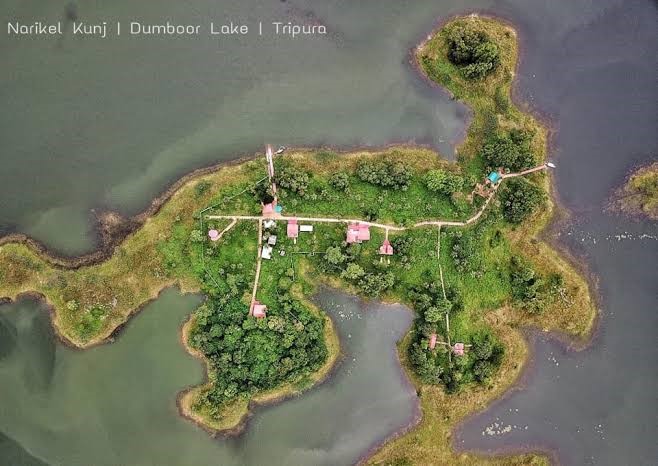
The Stories behind the name of ‘Dumboor’
At present, as widely articulated that the famous name of ‘Dumboor’ derives from the lake’s appearance, which is like the tabours shape of the small drum – a musical percussion instrument; it typically consists of a hollow cylinder with a membrane stretched across each end of the Lord Shiva, from which the name ‘Dumboor’ or ‘Dumbur’ originates.
However, the meaning of the origin name ‘Dumboor’ requires reconsideration because it appears to be misinterpreted and historically and culturally inappropriate. This is because today’s look of the lake was not always the same, as this lake’s water was merely a waterway of Gumti/Gomati/Khumtwi river. The tribals believed that ‘This dumboor lake was never known as dumboor; rather it was known as dongour’. The lake was earlier known to be ‘Dungour/Dongor’, meaning an area where there is a lake-like large stagnant water body originating from the water of a hill or waterfall. Though the Dongour (Dumboor currently) is not directly formed by the waterfall, it has taken its shape by joining two rivers known as Raima and Saima (Sarma) because of the dam. The name “Dongour” is connected with the famous folktale of “Raima and Saima” which is called “Dongour ni Khumpuui’.
Tale of ‘Raima and Saima’/ ‘Dongour ni Khumpui’
The folktale of Raima and Saima tells the tale of two sisters who take care of the household and the agricultural work of huk (shifting cultivation), while their father being an Ochai (traditional priest) was occupied with priestly duties. One day, when the two sisters were working at the hilltop of the huk, it began to pour and there was nowhere to take shelter like a Gairing (a hut made of bamboo). So, they sat under a tree but did not do much good because they were soaked and especially Saima, the younger sister was shivering cold. Gazing at her younger sister Raima, the elder sister, out of depression and agony told her sister and pledged, ‘Saima, I cannot see you shivering like this, there is no Gairing for us where we can take a shelter. If we had Gairing today, we could have taken shelter there, but alas! We have none. So, anyone who would build Gairing for us, I shall accept him as my husband. Let it be an ant, grasshopper, bird, monkey, snake, demon or anything.’ After she said that, as they could no longer work, they returned home when the rain slowed down
The next day when they return to their huk field, they have found a beautiful new Gairing. They were very ecstatic to find it in their huk field, at the same time they pondered who would have built such a beautiful Gairing overnight. However, as Raima has pledged to marry any person or animal who would build a Gairing for them, she decides to acknowledge them as her husband. So, at lunchtime, Raima instructs her sister Saima to invite her brother-in-law to eat lunch with them. When Saima called her brother-in-law by singing a song, her elder sister Raima’s husband arrived. But it was not a human being, but a big python, seeing such a fearful python, Saima hid behind the house. But Raima sees the python as a human being – a charming and handsome prince. It continued for several days eating lunch with both the sisters. The python revealed to Raima that he was the Dongour Raja – the ruler of the underwater kingdom known as Dongour.
However, after several days, Raima began to lose weight and Saima remained always in fearful, so their father noticed their behaviour and asked Saima what was going wrong. Saima chose to tell their father everything because she felt sorry for her older sister. After hearing everything, their father decided to kill the python because he could not accept him as his son-in-law. So, one day, their father sends Raima somewhere else to work. When she left, their father went to the Gairing with his younger daughter Saima, and he asked her to call her brother-in-law over lunch. As usual, Saima called her brother-in-law and the python appeared. Saima informed the Python that Raima did not come with her instead their father who is the Python’s father-in-law came to meet him. So, Saima told the python to greet their father by touching their father’s feet. When the python tries to touch his father-in-law’s feet, the father chopped the python into two pieces and threw it into a steep ravine. Raima, who was working somewhere else, experienced some unease at the exact moment when her husband’s head was severed. As she felt something terrible must have happened, she hurried to their home. When Raima gets home, she asks Saima about her husband whether she met him or not. Saima explains to her everything about how their father had killed the python. Then immediately, Raima went to their huk field and looked for her husband’s body. She discovered the dead body of her husband, in a field of Khumpui flowers, a kind of shrub flower found in the forest. Then Raima began to sob holding her husband’s head. Although ordinary people view it as a python, Raima sees it only as a human. She sobbed until her sadness consumed her. She implored and pleading her husband to take her with him, not to leave her behind and to wait for her. As she kept sobbing and continued to plead her tears began to turn into a stream, where she was standing. Then, eventually, the water lever steadily increased from her knees to her hip to her chest then to her neck and finally above her head, submerging her into the river. From that day onwards, that river was named ‘Khumtwi’ and later changed to Gumti/Gomati. It is believed that a huge water body came into existence and became a source of livelihood for the welfare of the indigenous Tiprasa people in Tripura.
It is said that where the python head was buried or dumped became a marsh and the Khumpui (Ginger lily) flower blooms in that place from where the folktale had been named “Dongour ni Khumpui”. For example, Mairung- an elderly man narrated the tragic and thrilling life of Raima and Saima (present-day Sarma), which are two rivers that formed the Gomati River, but after the dam was built it formed a lake currently known as ‘Dumboor Lake’. Alternatively, it could be said that the name was changed to Dumboor with additional new nomenclatures such as coconut Island or Narkel Kunja or Dumboor Island, which are associated with more commodity resources, to make it easier for non-kokborok speakers to pronounce.
The Narratives from Memories of River Life
Today, this lake may be known only for its beauty and charm as an Island but, the people who reside near and around Dumboor Lake still vividly remember how the Dumboor water was merely used as a waterway and life-giver and their saviour, as it fulfilled their needs for survival.
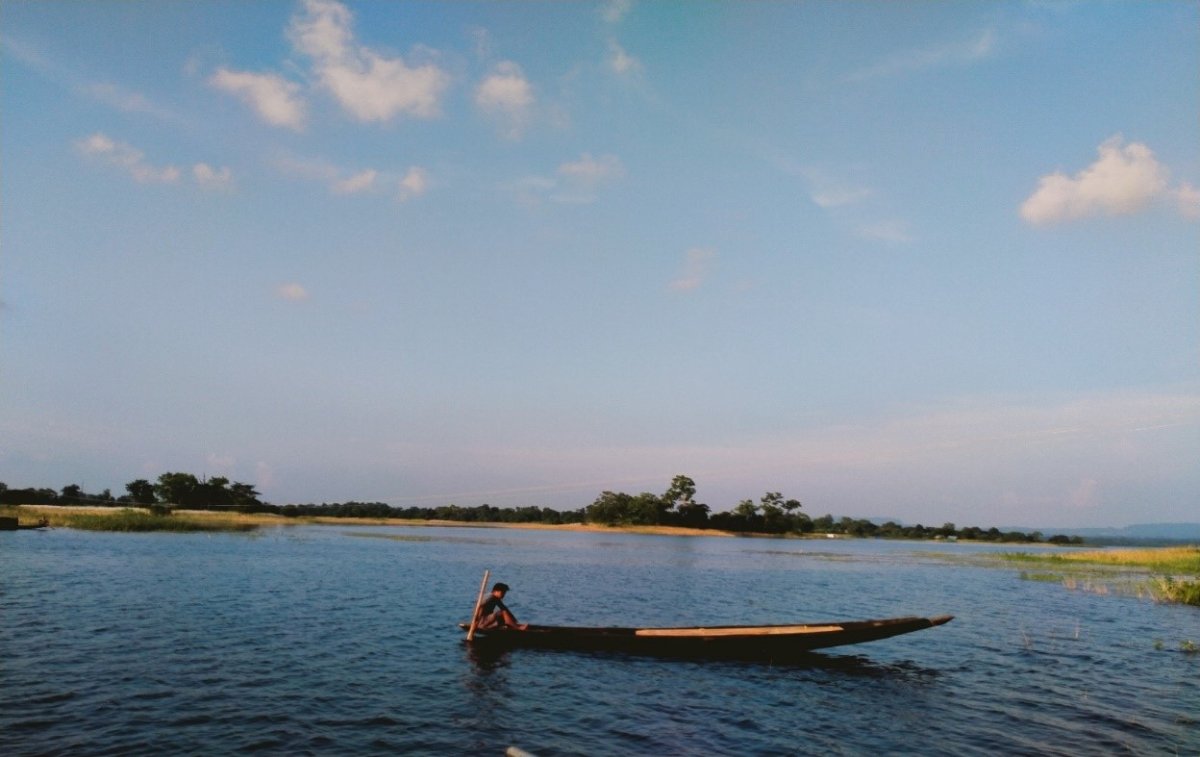
Figure 3: A man in his boat fishing in the Dumboor Lake (Image: Thomas Malsom)
Narrative 1: Kairu
For example, after a long journey from Agartala- the capital city of Tripura to Gandtwisa – a place where Dumboor Lake is situated, we went to Machkola village to meet Kairu, one of the old men of the village who has seen all the changes of Dumboor lake from his lifetime.
It was a sunny day when Kairu, a 65-old-man while slicing a juicy and delicious orange color of papaya, narrated to us in his sitting position about the olden days, how dumboor was then and for the people who were residing near to it. According to him Chakma, Reang, Nepali, Tripura - these are the people who lived together back then. He told us that, the Dumboor lake has never been a lake. He stated ‘The lake you see now, once used to be the land of twelve thousand families including mine. It was merely used as waterways to carry the goods on the bamboo-made raft.’ From this, we came to know that there was a time when tribal people would go to sell goods and use the water of the lake, which was then a waterway for good transportation. They would go with a few friends through the Gomati River which was formed by the Saima and Raima rivers. People used to go to sell ‘Ghee’ ‘Mustard’ ‘Til’ ‘Paat’ carrying them on a bamboo-made boat in Chakma known as “Bhoor”. While flowing through the river once they reach Tirthamukh, they would worship the goddess of that place for their safe travel, or else they believed that without praying for them they would not achieve a successful journey. It took months to take them for selling through the water path, but they had enjoyed the journey. When they would go on a long journey, they would leave their domestic cows to Nepali families. For about 6 months they would give all their cows to Nepalis. According to him, these Nepalis were brought by King Bir Bikram Kishore Manikya Debbarma for rearing cows and buffalos and for making dairy products like ghee, cheese etc, as they were known to have skills to look after these animals. Once the tribal people reached to main markets like Natunbazar, Melaghar, and Amarpur, they would sell all the goods and come back to the village after 2-3 months. After returning they would take back their cows from the Nepalis. From this, we comprehend that the Gumti Twisa or Gomati River was a huge waterbody and merely used for good transportation.
Narrative 2: Khakchuk
Like what Kairu said, Khakchuk also affirmed that near the Raima River, there was a civilization of prosperous people. According to him, during the rule of King Bir Bikram Raima area was known to be one of the richest cities. He said that ‘the royals used to come for marketing with their horses and elephants. The people of Raima were so rich they even had cars. My grandfather was a kid and his family known to be the Zamindar family. They had around 24 acres of land, wealth, and a prosperous family. My grandfather and his siblings used to see the royals. Besides Raima, there was one more market which was famous, and it was near the bank of Saima and the market was known as ‘Bulongbasha’. It was the second-largest market during ancient times. Present day it is situated in Gandatwisa, Dhalai Tripura. From what Khakchuk expressed, we can understand how much the areas near the Raima and Saima Rivers were fertile land. the inhabitants of this area were rich because of the land’s abundant rich resources. But now these areas, after the dam construction, have submerged completely into dam water.
Narrative 3: Chahena
Chahena- an elderly woman, reflected on the olden days and how their main livelihood source or traditional occupations of the tribals was Huk cultivation beside the Gomati River. ‘Jhum’ is a slash and burn – shifting cultivation, typical agricultural cultivation done by the tribals in the hilly areas. Besides this, hunting, fishing, trapping, and pastoralism were their other source of livelihood. Their primary source of consumption was the forest products. Other alternative means of living, especially those who are skilled at handicrafts were weaving, basketry, woodcarving etc. Especially, near the Gomati River the source of water was mainly rivers, wells, small waterfalls, and stoned water originates from the hills. Clear water was available to drink. As the vegetation was thick heavy rainfall used to occur. In this way, it became a centric to their economy, identity, and culture. This shows how nature becoming the only source of their livelihood and subsistence has made the tribal people worship and remember it through its folktales. Therefore, before the dam construction, in the ‘Raima River’, or ‘Saima River’ or ‘Gomati River’ the people did fishing, though fishing was not so significant. Because of the Gomati River has taken as sacred and worship.
Narrative 4: Murochan
Just like the other indigenous people, the people of Dumboor have a strong connection to nature and have worship practices that bring the community together. Over time, the indigenous people of dumboor areas have developed a symbiotic relationship with the river, which is presented in the form of spiritual beliefs and practices. For example, Murochan said ‘People used to believe the Gomati River was sacred, and it has hidden a lot of secrets.’ Here, he is referring to the place named ‘Thirtramukh’ which is known to be a holy place where currently ‘Hydropower Project’ is currently built on that place. It is believed that this place has fulfilled the peoples’ needs. For example, as he continued narrated, “It is said that when people do not have enough money and utensils to celebrate any family functions, they would go to prayed to ‘Gumti Ama’ (Goddess of Gumti) by saying that ‘ama’ I do not have any plates to celebrate my family function, please give me.” This way, they would perform a river worship ceremony and Gumti ama being the river goddess would fulfill their needs. Then the next day, when they went to the place where they pray, they would find gold utensils and silver plates. However, if they destroy those plates, they will not get more. Just like that during an unfortunate day, a man asked for utensils from the goddess and the wish was fulfilled accordingly. But he never returned the utensils which enraged the goddess. Since then, people have believed that the goddess had stopped giving any silver, gold utensils etc.
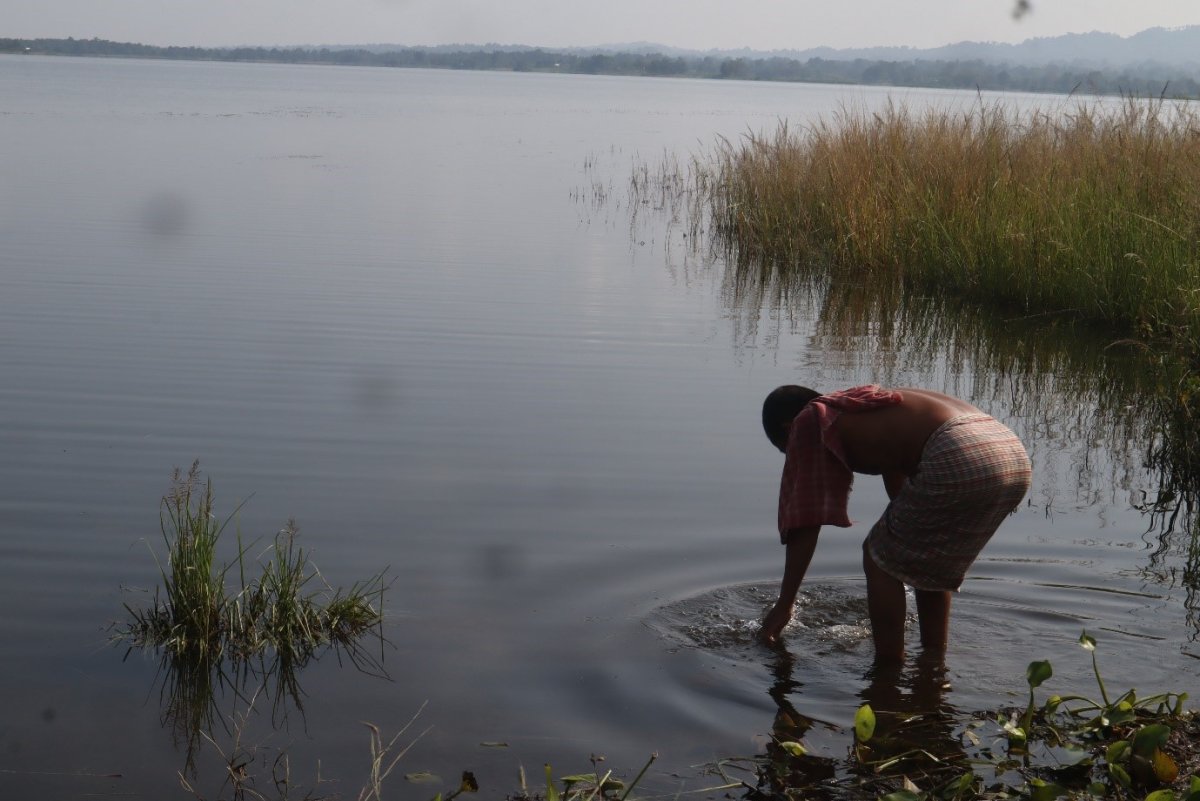
Figure 4: Kairu - an olderly man touching the water of Dumboor Lake (Image: Thomas Malsom)
Narrative 5: Ishika
Ishika (first author) is also one of the inhabitants who is residing in Gandatwisa. Her ancestors lived in the center of Raima Valley and lost lands because of the Dumboor dam. She is 22 years old now, although, she may not have witnessed all such events and dam destruction. But she represents a young generation and based on what she has been hearing either in the form of folktales or narratives, from elderly people either from the family members or outside family like her grandfathers, relatives, and people in general in the Dumboor area, she has deeply connected with the river and the below she has drawn the below poem based on her experiences.
You are pure and sacred
They believe you wash all the sins
Of every man’s deeds
The splash of your holy water
Sanctify the evil thoughts
And divines one soul
The fishermen adore you
As their mother
Cause you deliver their all means
Villagers worship you
As their goddess
Cause you are the lifesaver for them
But sometimes you become merciless
That leads people to suffer for food and shelter
They shade their tears
And blame their fate
But you flourish and grow graciously in an eternal way
Birth of Commodified Island
The Dumboor Lake has taken on the form of a stunning island because of dam construction. It has now been designated as a tourist and resort destination. However, it is important to remember how a waterway was transformed into the Coconut Island or Narkel Kunja. The reason for the name ‘Coconut’ is that, prior to the construction of the dam, some tribal people had planted coconut trees on that specific piece of land. The narrative of the river seems to be overlooked or kept aside under various new cultural and religious contexts. For instance, Dam caused the Gomati River to become a lake, which not only forced people to evacuate their land that was submerged under the water, but many narratives were submerged too. A lot of people have lost track of and forgotten the Gumti River’s significance. Numerous changes resulted from this metamorphosis, including the renaming of Dorgour as Dumboor.
Presently, the Dumboor Lake is a project based under the Coconut Island Authority. The authority has been taken by a non-local person and the locals continue to protest against it. The local settlers did not get the ownership and completely lost access. The locals must pay just to enter that island. Below photographs will give a glimpse of a commodified Dumboor Island.

Figure 5: Coconut Trees inside Dumboor Island (Image: Ishika Chakma)
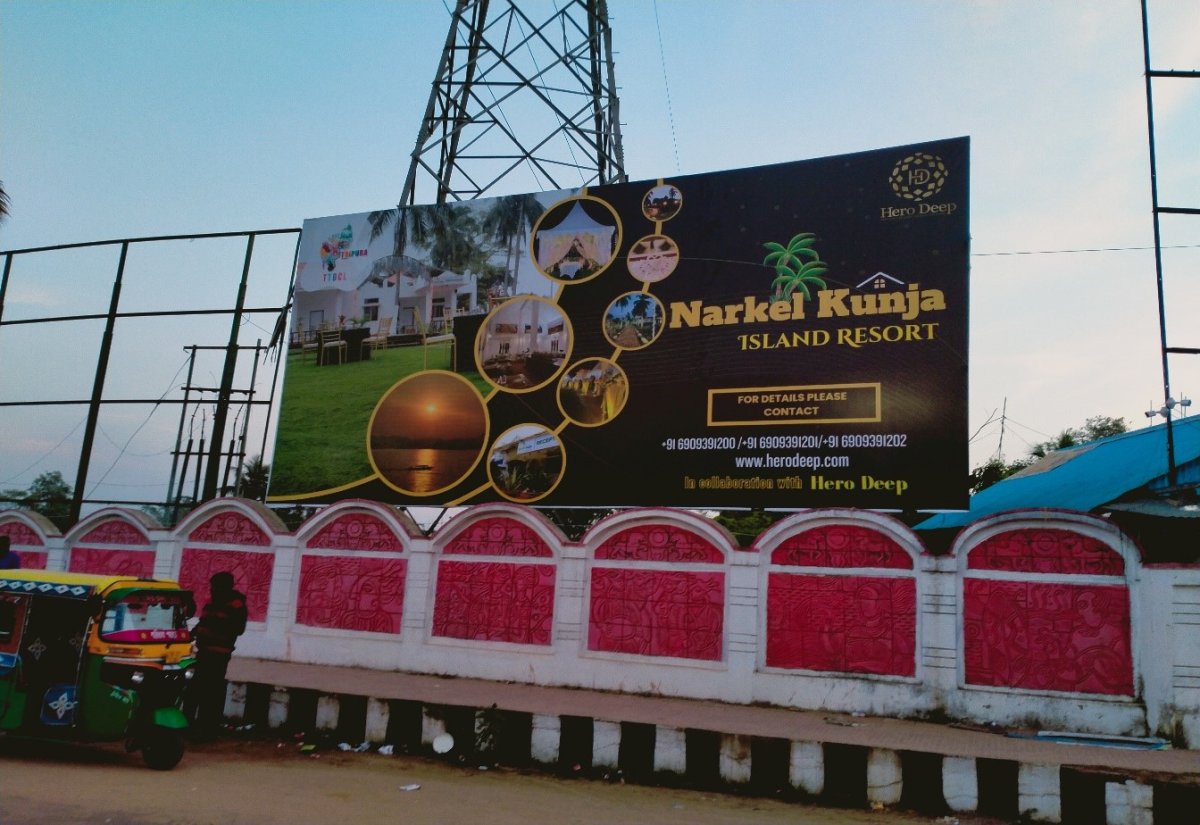
Figure 6: A sign board of Coconut Island at Agartal Railway Station (Image: Thomas Malsom)
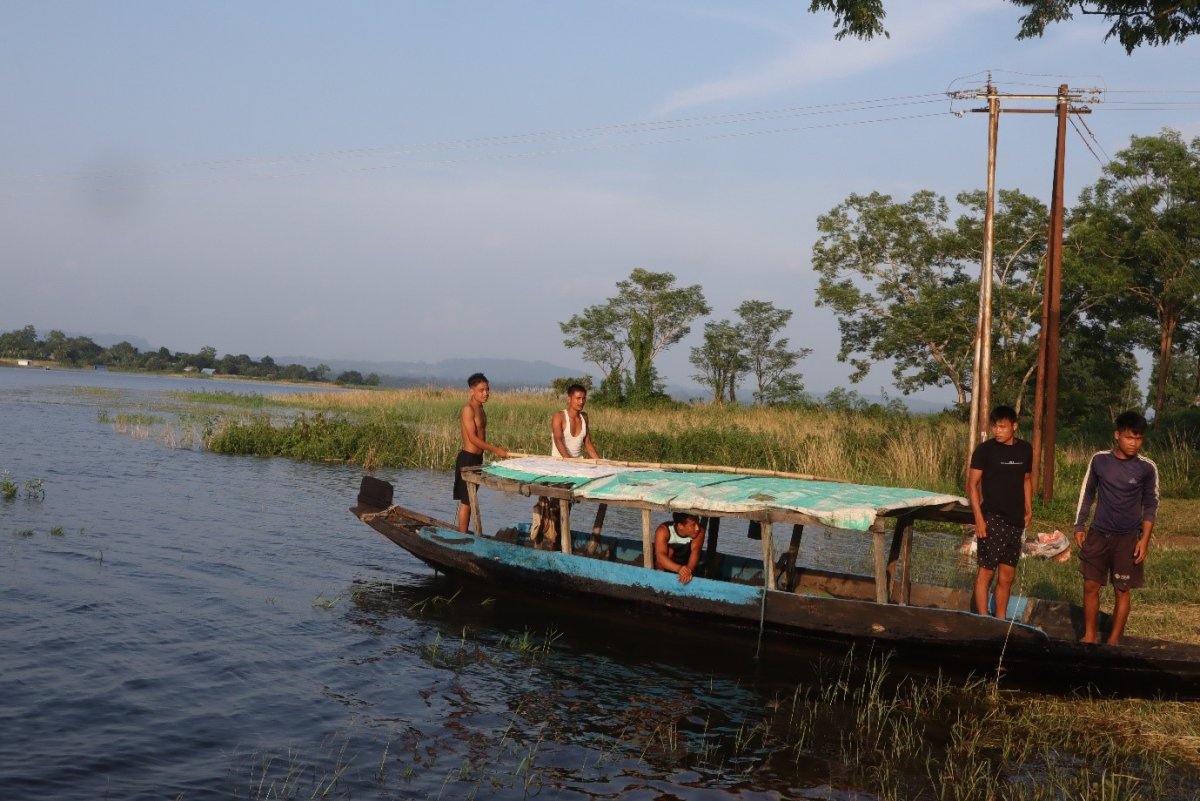
Figure 7: Boat men waiting for their Passengers (Image: Thomas Malsom)
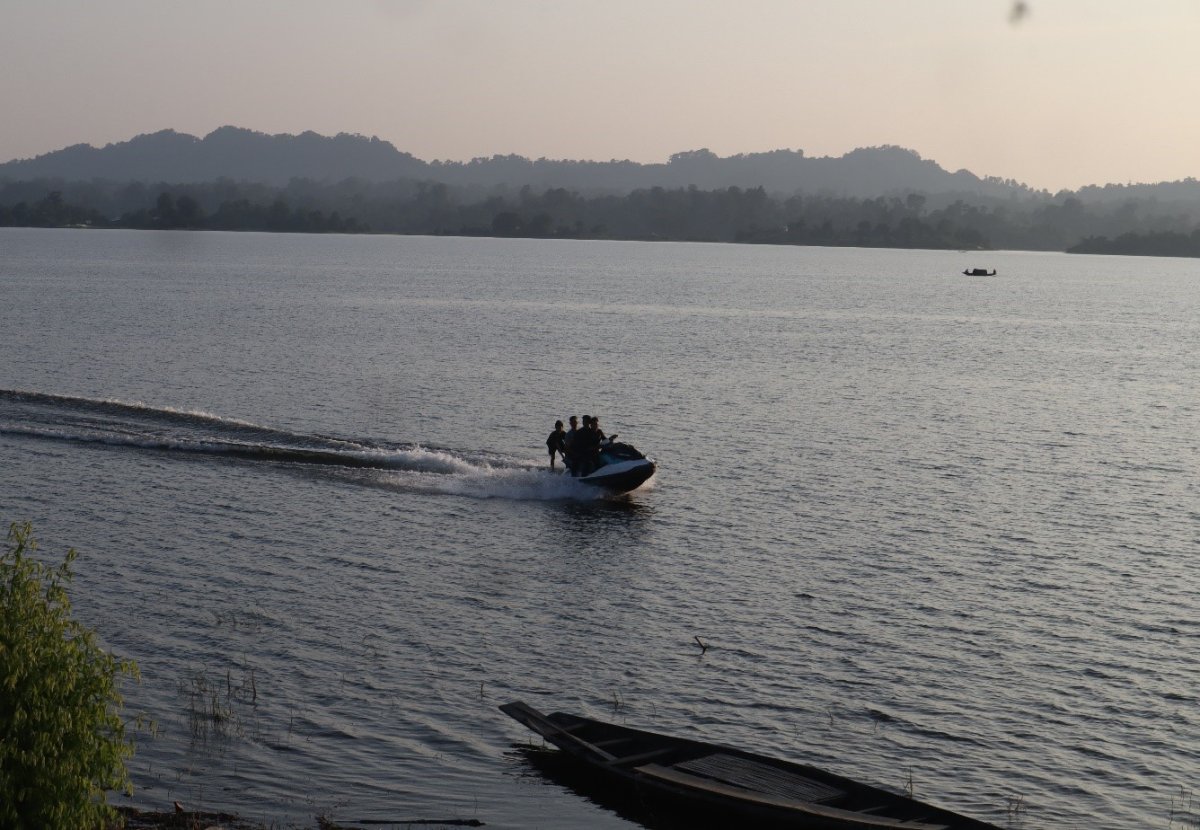
Figure 8: A tourist riding water motorcycle (Image: Thomas Malsom)
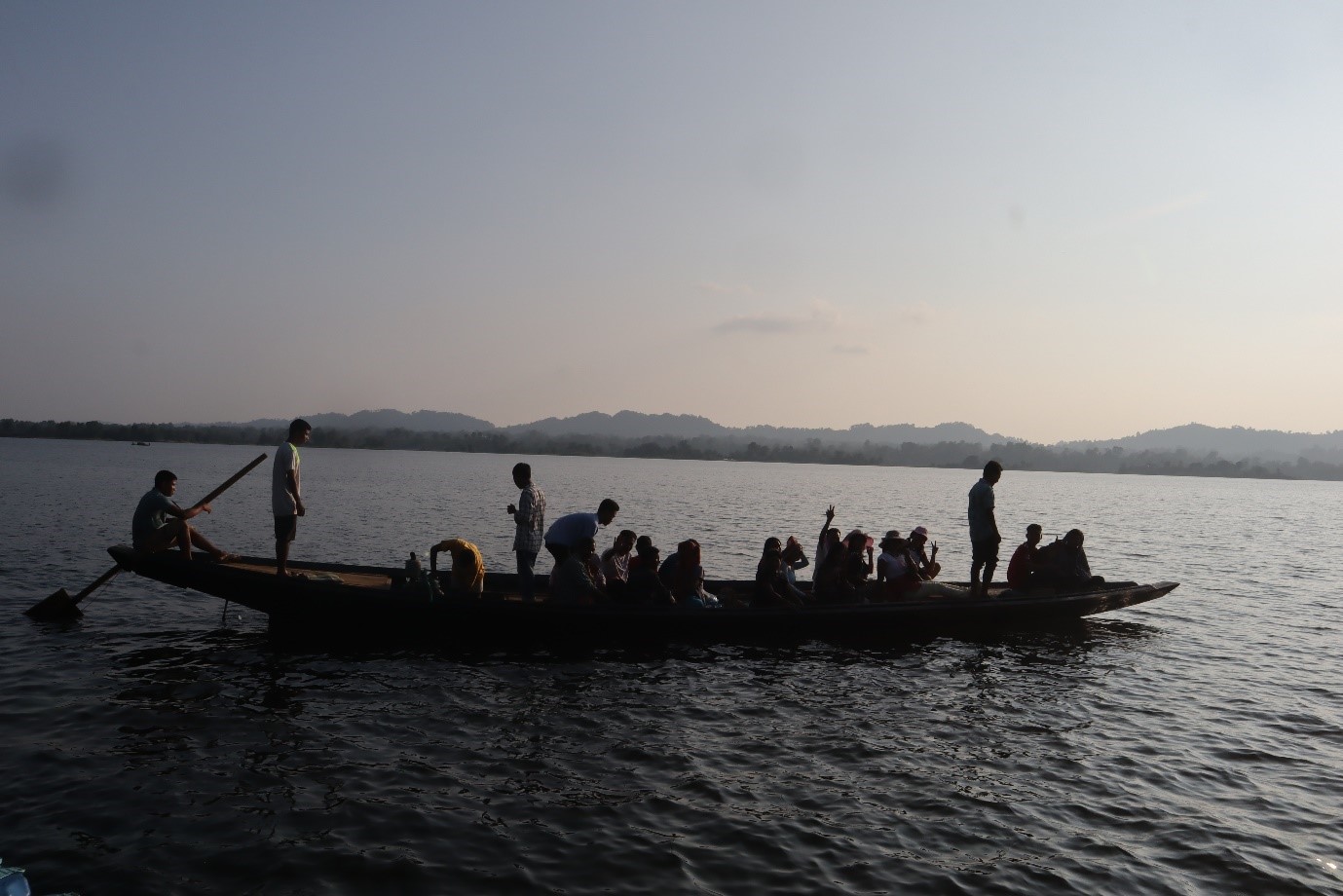
Figure 9: A Groupd of tourist riding the boat in the Dumboor Lake (Image: Thomas Malsom)
Note: The names of the respondents are kept anonymous.
About the Story Writers
Ishika Chakma – is a poetess, an environmental activist, and a feminist. She has completed her bachelor in English from ICFAI University, Tripura, Kamalghat (India). Currently, pursuing a Master of Arts (MA) Degree in English at Maharaja Bir Bikram University, Tripura. She is also working as a cultural correspondent in Homchang News Agency, Tripura. Being part of a patriarchal society, she has joined anti-patriarchal social movements. She speaks five languages and her best interest is in learning and understanding every culture of different communities. She is trying to learn about her own ‘Chakma’ history, culture, and language. She finds nature is the best place to find peace. Also, she is passionate about reading fictional novels, literature, art, music, and writing. Contact: +91 9362736138 Email: ishikachakma15@gmail.com
Thomas Malsom – aspires to research and document/write on the areas of Water, Community Development, Tribal/Indigenous Studies, Policies, and Forest/Environment. His research works have been published in various journals. He can be reached at mcthomashlutie@gmail.com Contact: + 91 9862492971
Geolocation is 23.478302, 91.843549


